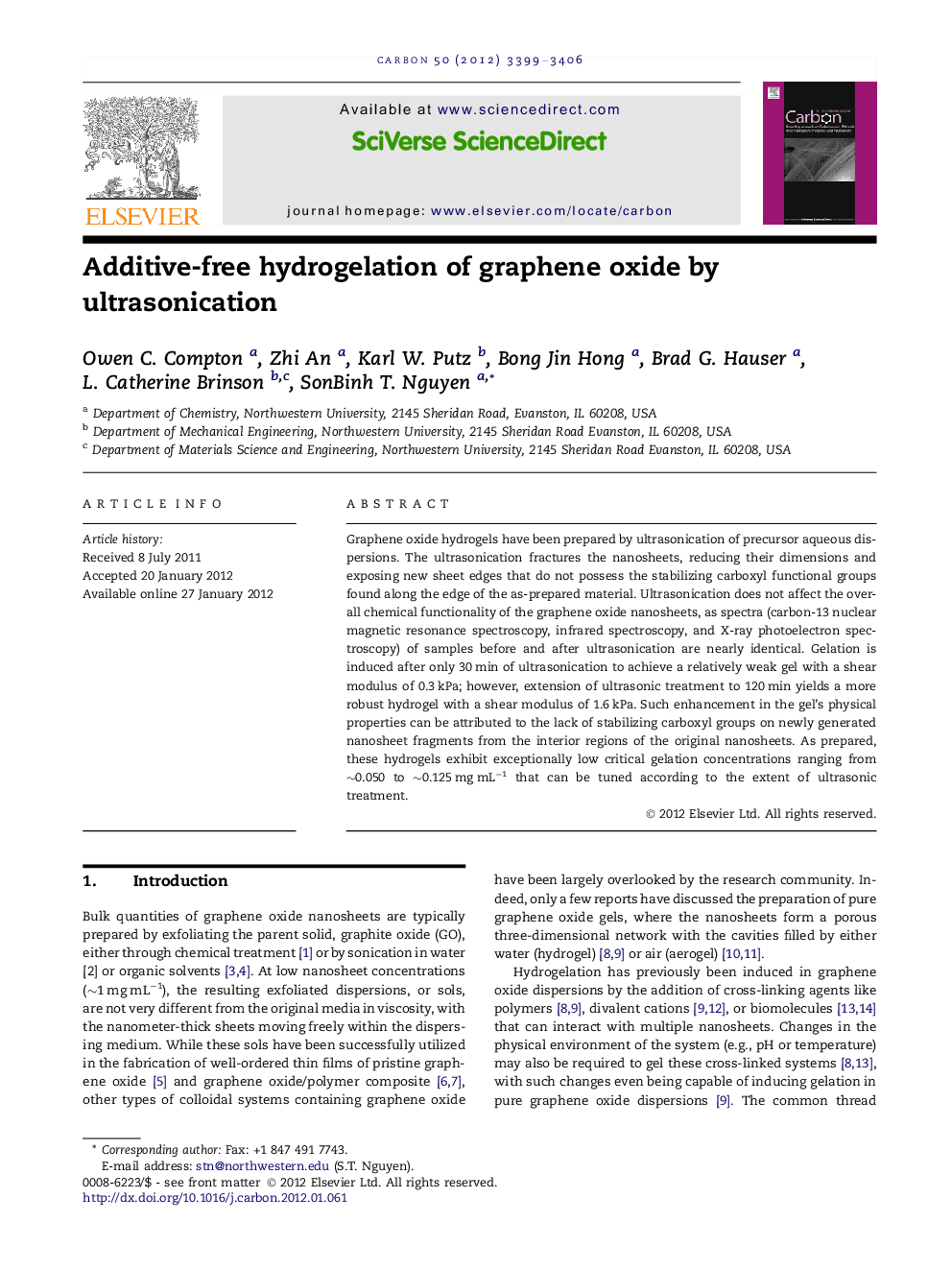| Article ID | Journal | Published Year | Pages | File Type |
|---|---|---|---|---|
| 1415211 | Carbon | 2012 | 8 Pages |
Graphene oxide hydrogels have been prepared by ultrasonication of precursor aqueous dispersions. The ultrasonication fractures the nanosheets, reducing their dimensions and exposing new sheet edges that do not possess the stabilizing carboxyl functional groups found along the edge of the as-prepared material. Ultrasonication does not affect the overall chemical functionality of the graphene oxide nanosheets, as spectra (carbon-13 nuclear magnetic resonance spectroscopy, infrared spectroscopy, and X-ray photoelectron spectroscopy) of samples before and after ultrasonication are nearly identical. Gelation is induced after only 30 min of ultrasonication to achieve a relatively weak gel with a shear modulus of 0.3 kPa; however, extension of ultrasonic treatment to 120 min yields a more robust hydrogel with a shear modulus of 1.6 kPa. Such enhancement in the gel’s physical properties can be attributed to the lack of stabilizing carboxyl groups on newly generated nanosheet fragments from the interior regions of the original nanosheets. As prepared, these hydrogels exhibit exceptionally low critical gelation concentrations ranging from ∼0.050 to ∼0.125 mg mL−1 that can be tuned according to the extent of ultrasonic treatment.
